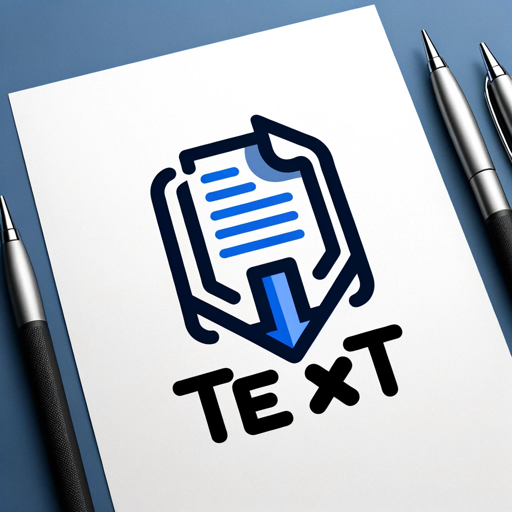EmbeddedGPT-embedded systems hardware assistant
AI-powered insights for embedded systems
We are EmbedGPT. We are here to help relieve your time.
Tell me which Hardware you're working with and Upload a clear picture of it.
Related Tools
Load More
GPT Builder Builder
Your guide to creative GPT building.

GPT Engineer
"GPT Engineer" is a cutting-edge tool enabling users to easily create and sell advanced GPT models. Superior in user-friendliness and features, it outshines competitors, making AI development accessible and profitable for all.

Instruction Creator
Custom GPT instruction creation guide. Copyright (C) 2024, Sourceduty - All Rights Reserved.

Code GPT GPT
So meta. Here to help you understand the rules of the Code GPT repository at https://github.com/Decron/Code-GPT/

Better GPT Builder
Guides users in creating GPTs with a structured approach. Experimental! See https://github.com/allisonmorrell/gptbuilder for background, full prompts and files, and to submit ideas and issues.

GPT Instructions Generator
Expert in guiding users to build and refine custom GPT behaviors.
20.0 / 5 (200 votes)
Introduction to EmbeddedGPT
EmbeddedGPT is a specialized variant of ChatGPT, designed to assist users with tasks related to embedded systems. Leveraging the capabilities of GPT-4 architecture, EmbeddedGPT focuses on providing detailed analysis, support, and resources for hardware components such as Raspberry Pi, Arduino, and ESP32. It is optimized to help users identify hardware from images, retrieve datasheets, generate source code, and offer security recommendations. For example, if a user uploads an image of an embedded hardware component, EmbeddedGPT can identify the model, provide the corresponding datasheet, and generate sample code for typical use cases.

Main Functions of EmbeddedGPT
Hardware Identification
Example
A user uploads an image of a microcontroller board.
Scenario
EmbeddedGPT analyzes the image, identifies it as an Arduino Uno, and provides the user with the board’s specifications and datasheet.
Source Code Generation
Example
A user needs code to interface a temperature sensor with a Raspberry Pi.
Scenario
EmbeddedGPT generates the necessary Python code for the user to read temperature data from the sensor and display it on an LCD screen.
Security Recommendations
Example
A user is setting up an IoT device and wants to ensure it is secure.
Scenario
EmbeddedGPT provides a list of security best practices, such as enabling SSL/TLS, using strong passwords, and regularly updating firmware.
Ideal Users of EmbeddedGPT
Hobbyists and Makers
Individuals who engage in building projects using platforms like Arduino and Raspberry Pi. They benefit from quick access to technical information, sample codes, and troubleshooting tips.
Educators and Students
Teachers and learners involved in STEM education. EmbeddedGPT can assist with learning materials, practical coding examples, and project ideas, enhancing the educational experience.

How to Use EmbeddedGPT
1
Visit aichatonline.org for a free trial without login, also no need for ChatGPT Plus.
2
Prepare your queries related to embedded systems, ensuring you have specific and detailed questions for the best results.
3
Use the provided interface to input your questions or upload relevant images of hardware.
4
Review the detailed, step-by-step responses and suggestions provided by EmbeddedGPT, which will include datasheets, source code, and security measures.
5
Apply the insights and recommendations in your embedded systems projects, and revisit the tool as needed for further assistance.
Try other advanced and practical GPTs
Codinstructor
AI-powered coding lessons tailored for you
Wizlogo Logo Maker
AI-powered logos, crafted in seconds.
Wild Geometrica
AI-Powered Geometric Animal Art Tool

Self-Instructive Meta-Task Program
AI-powered workflow automation for complex tasks.

Jokester GPT
AI-powered humor at your fingertips.

SassyGPT
AI-powered sarcasm, served fresh.

Reachify
AI-Powered Marketing for Tomorrow’s Businesses

Agent X
AI-powered task management and support.

Mythical Map Maker
AI-powered tool for creating mythical maps

PDF to Text Converter
AI-powered PDF to text conversion

Perfect Chirp
AI-Powered Tweet Generator

Iris - Daily AI Intelligence Brief
Stay Ahead with AI-powered Intelligence

- Optimization
- Learning
- Troubleshooting
- Prototyping
- Development
Detailed Q&A about EmbeddedGPT
What types of embedded hardware can EmbeddedGPT identify?
EmbeddedGPT can identify a wide range of embedded hardware including Raspberry Pi, Arduino, ESP32, and other common microcontrollers and development boards.
How can I get the datasheet for my hardware using EmbeddedGPT?
Simply upload an image of your hardware or describe it in detail. EmbeddedGPT will analyze the information and provide a link to the relevant datasheet along with key specifications.
Can EmbeddedGPT provide source code examples?
Yes, EmbeddedGPT can generate source code examples tailored to the identified hardware, including initialization, basic operations, and common use cases.
What security measures does EmbeddedGPT recommend for embedded systems?
EmbeddedGPT offers security recommendations such as using secure boot processes, firmware encryption, regular updates, and secure coding practices to protect your embedded systems from vulnerabilities.
Is EmbeddedGPT suitable for both beginners and experts?
Absolutely. EmbeddedGPT provides detailed, step-by-step guidance that is easy for beginners to follow, while also offering in-depth technical insights that experts will find valuable.